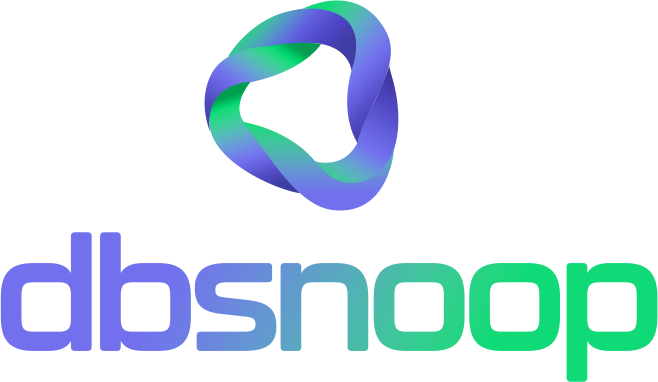
Sensu is an open-source monitoring tool designed to monitor the health and status of IT infrastructure, applications, and services. Sensu stands out for its flexibility and scalability, making it highly adaptable to complex IT environments, such as cloud infrastructures, containers, servers, and microservices. With a modular and event-driven approach, Sensu allows monitoring, data collection, and automation of troubleshooting efficiently and in real time.
In this article, we’ll explore what Sensu is, its key features, and how it can help ensure continuous and optimized operation of your IT infrastructure.
Key Features of Sensu
- Event-Based Monitoring: Sensu monitors the infrastructure by processing metrics and events in real-time, allowing IT teams to respond quickly to problems.
- Support for Containers and Kubernetes: Sensu is designed to monitor infrastructures based on containers and Kubernetes, making it ideal for organizations that run applications in these environments.
- Application Performance Monitoring: Sensu allows teams to monitor the performance of applications with detailed metrics about CPU, memory, network traffic, and application response time.
- Support for Standard Protocols: Sensu supports widely-used monitoring protocols like SNMP, HTTP, TCP, UDP, SMTP, and others, allowing flexible integration.
- Automated Alerts & Actions: The platform allows the configuration of automated alerts and actions, ensuring immediate problem-solving in case of failures.
- Cloud Monitoring & Automation: Sensu allows you to monitor cloud environments and integrate with services like AWS, Google Cloud, and Microsoft Azure, providing visibility and automation.
- Custom Data Collection & Dashboards: Sensu allows the creation of personalized dashboards and reports, making monitoring data easily accessible.
- Integration with DevOps Tools: Sensu easily integrates with a wide range of DevOps automation tools like Prometheus, Grafana, Slack, PagerDuty, and Ansible, facilitating the implementation of monitoring pipelines and continuous automation.
- Customizable Monitoring Rules: Sensu has a robust API that integrates with other tools, enabling the creation of customized workflows for traditional or hybrid infrastructures.
How Does Sensu Work?
Sensu is based on an event-driven architecture, where agents are installed on servers, containers, and devices to collect monitoring data. These agents send events to Sensu’s central server, which processes the data, generates alerts, and executes corrective actions based on configured rules. Sensu’s modular architecture allows for easily adding new functionalities, such as new types of monitoring and integrations with other tools.
Sensu stands out for its capability to monitor distributed and dynamic environments, being widely used in modern IT infrastructures, such as hybrid cloud and microservices environments. It offers support for both local and remote monitoring and is highly scalable to meet the needs of large organizations with thousands of devices and servers.
Benefits of Using Sensu
- Flexibility and Scalability: Sensu is a highly flexible and scalable platform, designed to monitor modern and dynamic infrastructures, from local environments to complex cloud and distributed architectures.
- Event-Driven Approach: With its event-based architecture, Sensu processes and reacts to real-time events, allowing IT administrators to act before incidents affect users or services.
- Automation with DevOps Integration: Sensu is tightly integrated with DevOps tools, enabling complete automation of monitoring in environments using CI/CD pipelines. This helps development and operations teams improve the reliability of their systems.
- Support for Multicloud and Distributed IT Infrastructures: Sensu is ideal for businesses that use distributed or hybrid infrastructures.
- Customization & Extensibility: Sensu’s modular architecture allows for high customization, with the ability to adapt the monitoring environment to the specific needs of different companies.
- High Availability and Fault Tolerance: Sensu offers high availability, ensuring that monitoring and alerts are configured to act even in case of hardware or software failures.
- Proactive Monitoring: Sensu allows proactive monitoring so that IT teams can identify and fix problems before they cause service interruptions.
Why Sensu is Ideal for Businesses of All Sizes
Sensu is designed to address a wide range of monitoring needs, making it suitable for startups, SMEs, and large corporations looking for a scalable and modern monitoring solution.
- Startups & SMEs: For smaller companies that are expanding their IT infrastructure to the cloud or container environments, Sensu offers a scalable monitoring solution, fully integrated into a modern DevOps and open-source model, making it affordable and efficient in terms of cost.
- Large Corporations: For large enterprises that manage thousands of distributed services and devices, Sensu offers flexibility, scalability, and the ability to expand.
- Companies Running Dynamic IT Infrastructures: Companies that run hybrid, container, and microservice environments can benefit from Sensu’s approach to ensuring their infrastructure is efficiently monitored.
Comparison Between Sensu and Other Monitoring Tools
Sensu stands out for its event-based architecture and modular approach to monitoring modern infrastructures and dynamic environments. Here is a comparison with other popular solutions:
- Sensu vs. Zabbix: Zabbix is a more traditional open-source monitoring tool. Sensu, on the other hand, is designed for modern IT environments, such as clouds, containers, and with better support for integration with DevOps and automation.
- Sensu vs. Nagios: While Nagios is a widely-used monitoring tool for traditional IT environments, Sensu offers greater flexibility with a more distributed event-based architecture.
- Sensu vs. Prometheus: Prometheus is a powerful tool for application and system monitoring, but Sensu offers a more extensive architecture.
Pricing for Sensu
Sensu offers a free, open-source version available for download and use, with an option to upgrade to Sensu Go, which includes premium support and advanced features. The Sensu Go pricing model is based on the number of agents and monitored resources, allowing companies to adjust costs as their monitoring needs grow.
Conclusion
Sensu is a modern and open-source monitoring platform designed for high flexibility and scalability. With advanced features focused on generating insights for dynamic IT infrastructures, applications, and services, it adapts well to environments that involve clouds, containers, and microservices. The platform integrates smoothly with DevOps tools, allowing companies to monitor their IT operations with efficiency and productivity.
When considering the transition to Sensu with dbsnOOp, you’ll find that dbsnOOp stands out in offering an even broader infrastructure approach. dbsnOOp brings advanced functionalities, such as predictive analysis and AI-based insights, focusing on optimizing database performance. These capabilities, combined with Sensu’s monitoring architecture, reduce troubleshooting and MTTR, improving SLAs. Also, dbsnOOp provides detailed and specialized insights into database operations for businesses that require more refined control over their infrastructure.
Thus, Sensu is a great choice for businesses looking to maximize infrastructure performance and achieve more accurate data insights. But when considering a migration to dbsnOOp, its advanced intelligence capabilities make it a superior cost-benefit strategy for organizations that need high efficiency and deep insights to maintain infrastructure performance at its best.
Give it a try for 14 days, no burocracy, no credit card
Learn more about Flightdeck!


